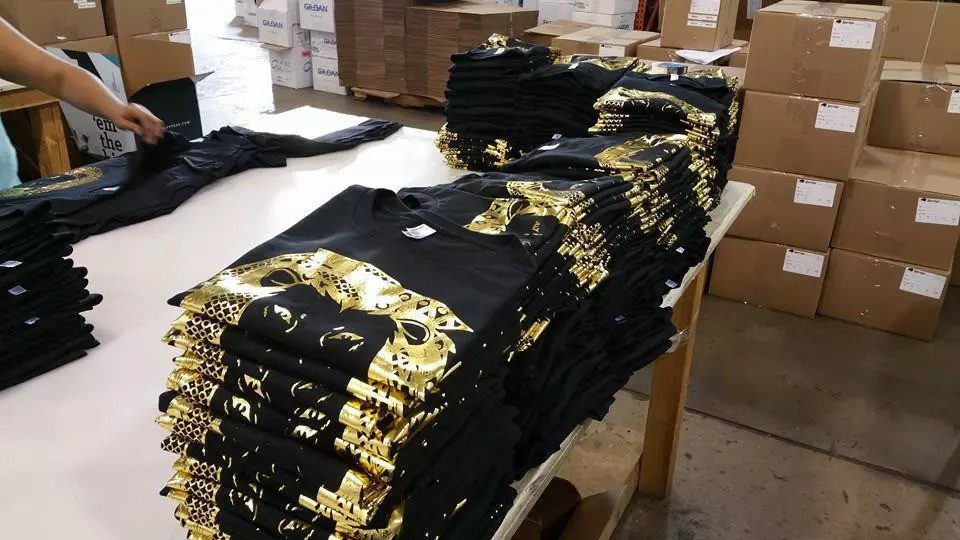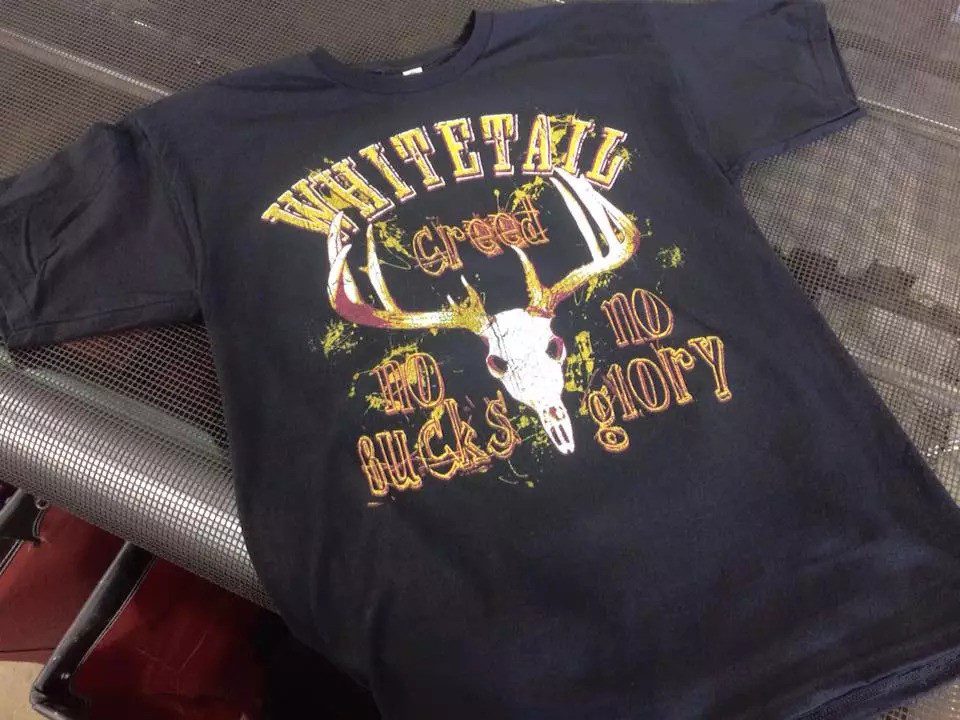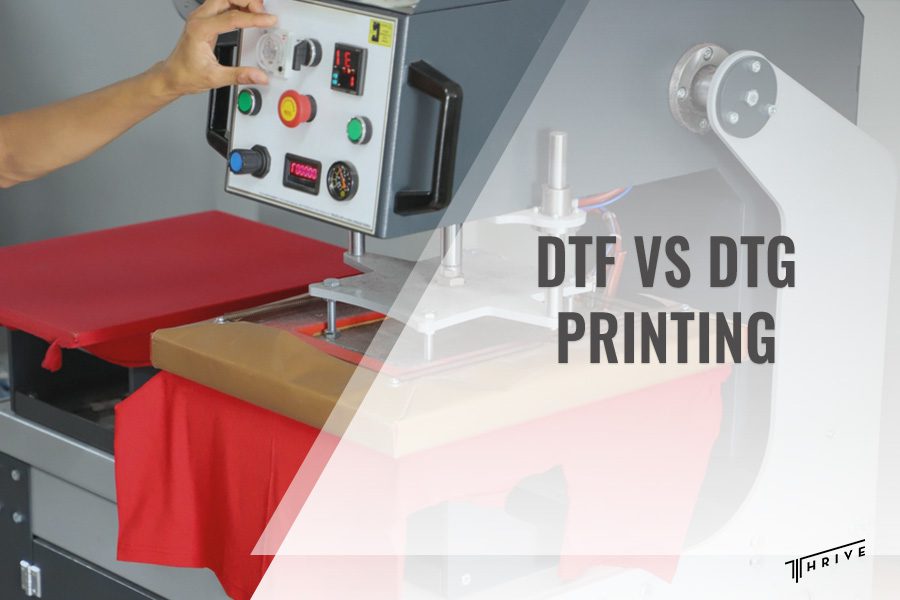Choosing between direct-to-film (DTF) and direct-to-garment (DTG) methods is critical when printing on garments. As enthusiasts and industry insiders, we’ve taken the initiative to delve into these two techniques, unraveling their fundamental differences.
Our exploration will provide valuable insights into the strengths, weaknesses, and unique features of DTF vs DTG printing, which can serve as a helpful guide for those interested in garment printing.
Key Differences Between DTF and DTG Printing
DTG and DTF printing are methods used to create detailed designs on t-shirts, hoodies, and tote bags, both options more efficient than screen printing. However, there are significant differences between these two methods, including their distinct printing equipment and techniques.
To make an informed choice between DTG and DTF for your printing needs, you need to understand the differences between these two methods.

What Is DTG Printing?
Direct-to-garment printing (DTG) is a printing method that involves applying ink directly to a garment. This printing technology uses aqueous instead of oil-based inks like a standard computer printer.
To print a design on a garment using DTG, a digital art file is sent to the printer. Before printing, a pre-treatment solution is applied to the clothing to prevent the white ink from soaking into the fabric or mixing with other inks.
The solution is then dried using an air dryer or heat press to create a smooth printing surface. Once the pre-treatment solution is cured, the garment is placed on a platen, which keeps it in position.
The platen is then threaded through the DTG machine, analogous to how paper moves through a printer. The machine applies the aqueous ink, and the garment is cured to fix the design.
For those exploring DTG possibilities, consider the convenience of DTG contract printing services, which can streamline the process and elevate the quality of your custom apparel ventures.
How does DTG printing work?
Compared to DTF printing, DTG printing follows a more straightforward process. To print the design on the garment, operators apply pre-treatment directly onto the fabric, aiding the ink’s bonding process.
Subsequently, they mount the garment onto a platen and spray water-based inks onto the fabric to form the design. Finally, they cure the ink to enhance the print’s durability.
The primary advantage of DTG printing lies in its simplicity for one-off prints, as it requires minimal setup time. Printing a single t-shirt takes only a few minutes, and the production costs are on the low end.
What Is DTF Printing
DTF, direct-to-film printing, is today’s most advanced and effective technique. This cutting-edge method involves printing a design onto PET film (a unique film with a coating that helps transfer designs) using water-based inks and a unique powder adhesive.
The PET film is then heat transferred onto the fabric using a heat press machine, producing a design that is incredibly durable, detailed, and vibrant. The PET film used in DTF printing is specially coated to ensure the design transfers flawlessly onto the fabric.
The water-based inks used in this process are eco-friendly and produce more vibrant designs than other printing methods. DTF printing is the preferred choice of the textile industry due to its superior quality, ease of use, and durability.
If you want a printing technique that guarantees exceptional results, then DTF printing is the way to go.
How does DTF printing work?
DTF printing is faster and ideal for detailed designs on bulky outdoor garments. Let’s explore the DTF printing process for those interested.
1. Preparing the film and powder adhesive
First, you prepare a PET film in the DTF printer. The printer then prints the entire design in color on this film. Next, a white layer covers the whole image, masking the first layer.
Then, you evenly apply a powder adhesive over the wet ink. After evenly spreading the powder and removing any excess, heat the film to prepare it for fabric transfer. You can use a curing oven or a heat press for this heating step.
2. Pre-pressing the fabric and using a heat press
After preparing the fabric by preheating, dehumidifying, and flattening it with a heat press for 2-5 seconds, you can position the PET film with the desired design onto the fabric. Cover the PET film with non-stick paper before using the heat press to imprint the design onto the fabric to guarantee a seamless transfer.
What Designs Are Better For Each Printing Process?
While DTF and DTG printing methods might appear similar, they exhibit significant differences. Both methods yield impressive outcomes, yet there’s more depth to consider.
Regarding print quality and durability, DTF prints boast smoothness, elasticity, and exceptional print quality. They are not susceptible to cracking, can be worn for several wears and washes, and maintain color vibrancy through cold to lukewarm washes.
However, exposure to boiling water during washing may lead to cracks in the design. DTF excels in printing photos, vibrant designs, graphics, and fine art. The ink doesn’t penetrate the fabric but sits atop it, creating a thin print.
DTG printing also delivers outstanding print quality. Fresh prints might initially possess a slightly rough texture, but this smoothes out after a few washes. The print might have a somewhat rubbery feel but doesn’t feel unpleasant when touched.
DTG is ideal for printing vibrant designs, graphics, text, and more. However, since the fabric absorbs the ink, the print’s vibrancy might diminish, especially on black or colorful garments.
Adhering to the care instructions for printed garments ensures that DTF and DTG prints last long without cracks, peeling, or fading.

Conclusion
When comparing DTF vs DTG printing, it is essential to consider the specific requirements of your project. These include the type of garment, the intricacy of the design, the desired print quality, and the production volume.
By understanding the strengths and limitations of each method, individuals and businesses can make well-informed decisions that best align with their printing needs.
This ensures the production of high-quality, cost-effective, and efficient custom apparel. As technology advances, DTF and DTG printing techniques are set to evolve even further, opening up new possibilities in textile printing.

Robert Fisher is the founder and CEO of Thrive Screen Printing and brings extensive experience in the screen printing and fulfillment industry.


